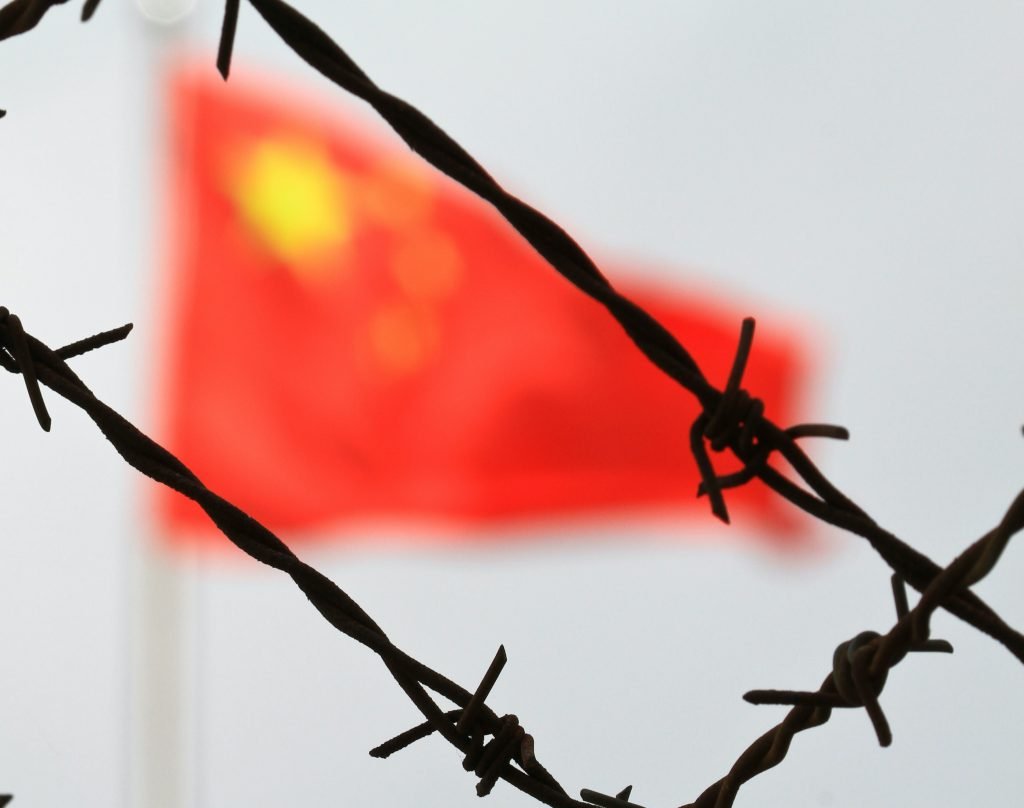|
Listen to article
Getting your Trinity Audio player ready...
|

India requires a policy mix to deal with China’s many curveballs.
Keywords: India-China Border clash | Covid-19 crisis | Xi Jinping Thought | Indian Ocean | Quad
Amidst the lingering Covid-19 crisis, came the news of deadly clashes between the Indian and Chinese forces at the Galwan River area in Ladakh and Naku La in Sikkim. Situated in Sub Sector North (SSN), the Galwan River area has a painful history of Chinese troops surrounding a newly pitched Indian Army post in July 1962, which would be one of the early triggers for the India China war later that year. The Galwan River stand-off on 5th May at Patrol Point 14 in the Ladakh sector is close to the Daulat Beg Oldi airfield – a lifeline for Indian Army soldiers posted in SSN. Indian presence was scaled up along the volatile border, after heavy construction was observed from across the Demchok area, on the Chinese side. Days later, Indians were horrified to learn of the gruesome attacks and subsequent fight between the Chinese forces on the 16 Bihar Regiment on the 15th of June, in which 20 Indian soldiers lost their lives.
Another scuffle had broken out at Naku La Pass in Sikkim near the border with Tibet on 9th May. It is close to the ‘Finger Area’ of Sikkim, an area contested by China with a record of frequent incursions. The Sikkim-Tibet border row erupted on 16th September 1965, during the India Pakistan war, when China issued an ultimatum to India to vacate Naku La. However, GOC 17 Mountain Division’s Major General, Sagat Singh, refused to budge, asserting that Naku La was on the watershed which formed the natural boundary. In 1967, a military clash at Naku La saw 340 Chinese and 88 Indian Army men killed. It is a few kilometers south of the Chorten Nyima Pass, in western Sikkim, leading to Tibet. Because of the largely settled western part of Sikkim’s northern border, as it follows the watershed based on the 1890 Treaty which China swears by, and the difficulty in accessing it, Claude White – the British Political Officer in Sikkim – found it unnecessary to erect a pillar at Naku La. Exploiting a historical loophole, the Chinese chose to open a front here.
China wants the border with India to remain unsettled unless settled on its terms. An unsettled border leaves room to keep India engaged while a border settled on its terms, will leave India bereft of any geostrategic heft.
India and China have serious differences in the perception of the alignment of the border. Even the first step of mutually delineating the LAC has remained elusive. Though China claims to be guided by the ‘watershed principle’, it points to ‘other geographical features’. China has also accepted the policy of ‘not disturbing settled populations’, yet it wrangles over Arunachal. China’s relations with India depend on the dynamic between US and China, US and India, and India’s relations with Pakistan. China wants the border with India to remain unsettled unless settled on its terms. An unsettled border leaves room to keep India engaged while a border settled on its terms, will leave India bereft of any geostrategic heft.
China knows that it cannot challenge the combined naval might of the four Quad powers – US, India, Japan and Australia.
For China, India is a rival for power in Asia and the world due to its advantage of sitting atop all the major routes in the Indian Ocean through which the bulk of China’s energy supplies pass. To offset India’s advantage in the south, it is necessary for China to keep India at a disadvantage on its north. China is paranoid about the security of its trade routes in the Indian Ocean. China’s economic growth needs resources from all over the world. Slackening growth could let loose the forces of internal dissent. The core element of “Xi Jinping Thought” is national cohesion, without which the survival of Communist China is impossible.
India’s decision to include PoK through which the CPEC passes in IMD weather forecasts has rattled the Chinese.
China knows that it cannot challenge the combined naval might of the four Quad powers – US, India, Japan and Australia.Therefore, the Quad taking a definite shape is anathema to China. The PLA Navy will be challenged by Japan in the north Pacific, by the US in the Pacific and by the Indian, US and Australian navies operating in tandem in the Indian Ocean. Were the Americans ever to succeed in blockading the Chinese coast, it is the Karakoram Highway that is China’s best link to the sea. Gwadar port in Balochistan is one of China’s closest points of maritime access. That is why the China Pakistan Economic Corridor (CPEC) – a component of the Belt and Road Initiative (BRI) – is very crucial for China. In such a backdrop, it is easy to see why China is raising the ante at the border at a time when meteorological warfare between India and Pakistan is heating up. India’s decision to include PoK through which the CPEC passes in IMD weather forecasts has rattled the Chinese.
The array of Chinese ploys include, trapping India’s entire neighborhood under mountains of un-repayable loans; threatening Australia with a trade war; deploying maritime militias against Vietnam; projecting naval power in East and South China Seas, and influencing US policies by funding research in top American Universities and think-tanks.
To understand Chinese strategy, we need to draw lessons from Mao. With Mao at the helm, the Communists deftly tailored their strategies; first to capture territory, then to consolidate, and then to expand it further. To reunify China, they changed their tactics from guerrilla warfare to territory-holding (Jiangxi Soviet) and later to expansion. China has taken a raft of measures to split opposition, exploit divisions, build support, gain clients, contain rivals and silence rebellious states. The array of Chinese ploys include, trapping India’s entire neighborhood under mountains of un-repayable loans; threatening Australia with a trade war; deploying maritime militias against Vietnam; projecting naval power in East and South China Seas, and influencing US policies by funding research in top American Universities and think-tanks.
The recent flare-ups at the border could be a Chinese broadside to warn India not to side with the West in the probe on the origin and spread of Covid-19, not to do anything that will upset the CPEC, not to support the restoration of Taiwan’s ‘observer status’ in WHO and to stop upgrading the border infrastructure which could place China at a strategic disadvantage.
China is known to stoke border unrest when it wants to send a signal to India. One of the reasons why China launched the 1962 war was Nehru’s permissiveness for Kuomintang activities in India. China had reports of Kuomintang elements supporting Tibetan guerrillas in Tibet through the Rumtek monastery. China wanted Nehru to end his support for the Tibetans. The recent flare-ups at the border could be a Chinese broadside to warn India not to side with the West in the probe on the origin and spread of Covid-19, not to do anything that will upset the CPEC, not to support the restoration of Taiwan’s ‘observer status’ in WHO and to stop upgrading the border infrastructure which could place China at a strategic disadvantage. Beijing is also incensed over Delhi staying out of the Regional Comprehensive Economic Partnership (RCEP), returning faulty Covid-19 test kits, Indian ministers talking publicly of hosting foreign companies leaving China, changing FDI rules to curb predatory business practices by Chinese companies during these times of market distress, boycotting Chinese products and curbing Chinese funding in infrastructure projects.
Only a strategy long on capability and short on rhetoric can help India in overcoming the Chinese threat.
Only a strategy long on capability and short on rhetoric can help India in overcoming the Chinese threat. China grew rapidly by keeping its head low, turning the rhetoric down, avoiding bravado and working hard ‘to get cats from all over to catch the mice.’ India should work quietly to lessen dependence on Chinese imports by shoring up its domestic manufacturing base and supply chains. Simultaneously, India needs to strengthen its armed forces, augment its defence production capabilities, resolve to endure face-offs and align itself with other geopolitical and geoeconomic forces with convergent strategic interests.
India has a raft of options to embarrass China such as raising the Tibet, Taiwan, Hong Kong and Uyghur issues in the appropriate international fora, condemning China’s revanchist behavior in the South and East China Seas, joining the US-led ‘freedom of navigation exercises’ or FONOPs, bolstering the Quad, and naming and shaming China on the origin and the initial cover-up of Covid-19 outbreak. At the tactical level, India’s counter strategy against China’s border aggression should involve the ability to use the ambiguity of the LAC to make asymmetric gains in zones where India has a tactical advantage. Only then there will be some bargaining chips available to Delhi to restore status quo ante whenever the Chinese intrude into Indian territory.
India has a raft of options to embarrass China such as raising the Tibet, Taiwan, Hong Kong and Uyghur issues in the appropriate international fora, condemning China’s revanchist behavior in the South and East China Seas, joining the US-led ‘freedom of navigation exercises’ or FONOPs, bolstering the Quad, and naming and shaming China on the origin and the initial cover-up of Covid-19 outbreak.
In the words of India’s foreign minister, Dr S. Jaishankar, “a combination of three approaches will remain in the policy mix to deal with China: internal balancing – developing capabilities in response to China’s growing power, engagement – working with China to reach understandings which requires some give and take by both sides, and external balancing – working in tandem with others to gain leverage against China. If India’s internal balancing is inadequate, and engagement requires some genuine compromises by Beijing, Delhi must logically accelerate its efforts at external balancing to deal with a more powerful China.”
If India’s internal balancing is inadequate, and engagement requires some genuine compromises by Beijing, Delhi must logically accelerate its efforts at external balancing to deal with a more powerful China






Add comment